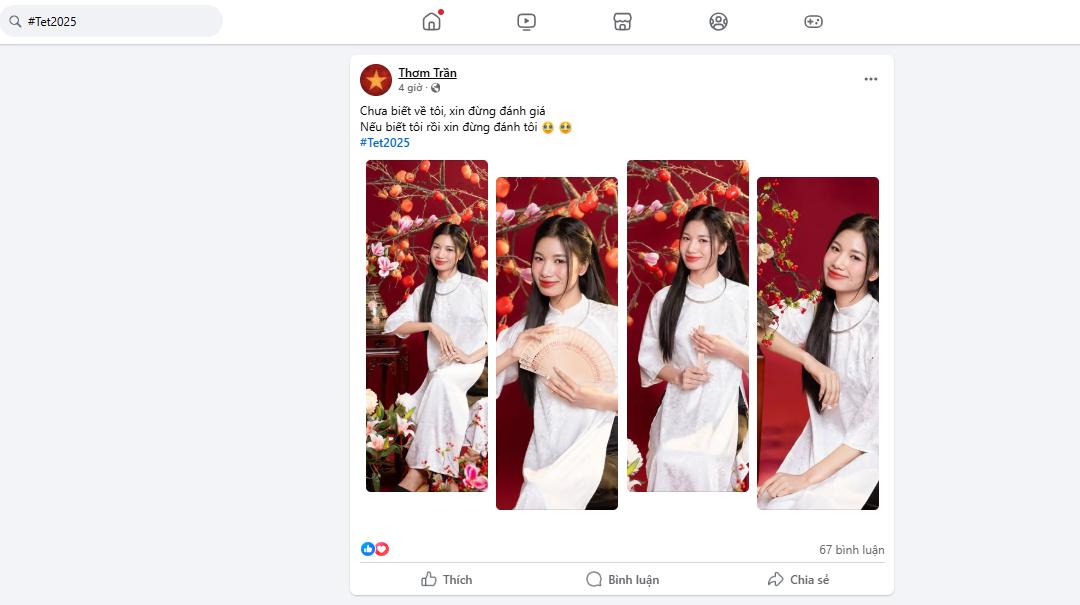Facebook ADS
What is a Hashtag on Facebook? How to Use Hashtags Effectively
Hashtags on Facebook are not only tools to “tag” content but also keys to creating a unique identity, from large brands to individual users. Understanding what hashtags on Facebook are and effectively utilizing each type of hashtag will help your posts stand out, attract the right audience, and increase engagement value.
1. What is a Hashtag on Facebook?
A hashtag on Facebook is a familiar concept to social network users, having appeared for a long time and becoming increasingly popular. A hashtag is identified by the “#” symbol placed before a word or a phrase written without spaces. When users click on a hashtag or search for it in Facebook’s search bar, the platform displays a list of posts, images, or links related to that hashtag’s topic.
Hashtags are not limited to Facebook; they are widely used on many other social networks such as Instagram, Pinterest, and especially Twitter — where hashtags have become symbols to follow trending topics.

Hashtags not only connect content to specific subjects but also expand search capabilities, increase interaction, and help build online communities around shared interests. This is a powerful tool that is both simple and effective for organizing and discovering information in the digital world.
==> See also: Quality Facebook Ad Account Rental Services
2. Benefits of using hashtags
Increase traffic and optimize your Facebook page: Hashtags are not only tools to connect related content but also play an important role in optimizing your Facebook page. When used correctly, your posts have a higher chance of appearing in search results. This helps increase organic traffic, thereby improving your page’s ranking on the platform.
Support measuring marketing campaign effectiveness: Hashtags are also useful tools for marketers to track and evaluate the success of promotional campaigns. By clicking on a hashtag, you can see a collection of posts using that hashtag, the number of mentions, and the level of engagement. This data provides visual insights that help businesses measure KPIs and identify how many customers have been reached by the campaign.
Generate additional income from hashtags: If you own a page or a personal account with significant influence, collaborating with brands to promote products through hashtags can bring substantial revenue. Many brands are willing to pay for their posts to appear with relevant hashtags, increasing their reach to customers.

3. Common types of hashtags on Facebook
Hashtags on Facebook are not only tools for tagging content but also help categorize, connect, and increase the reach of posts to the right audience.
Brand Hashtags: Increase brand awareness and build a loyal customer community. Businesses often create their own hashtags to promote products or services. This helps customers easily follow related information and contributes to spreading the brand.
Examples: #Apple, #CocaCola, #Vinamilk

Event Hashtags: Promote and encourage public participation in events.
Examples: #Asiancup2024, #VnExpressMarathon
Trend Hashtags: Join and leverage hot social media trends to boost engagement. These hashtags are associated with challenges, campaigns, or widely followed phenomena.
Examples: #InMyFeelings, #10YearChallenge
Personal Hashtags: Express personality, interests, or share individual stories. Users create hashtags related to their hobbies or favorite topics to showcase their lifestyle and connect with like-minded people.
Examples: #Minimalism, #Trekking

4. How to create and use hashtags effectively on Facebook
Hashtags are useful tools that help content on Facebook easily reach a wide audience. However, to maximize the benefits of hashtags, you need to understand how to create and use them effectively.
Rules for Creating Hashtags
- Start with the #: This is a mandatory rule. Hashtags always begin with the “#” symbol so the system can recognize and group related content.
- Write without spaces or accents: Words in a hashtag must be written together without spaces, punctuation, or special characters.
- Use relevant keywords: Hashtags should accurately reflect the content of the post, helping users easily find the topics they are interested in.
- Keep it short and memorable: Hashtags that are too long are hard to remember and reduce search effectiveness.
- Use both Vietnamese and English: Depending on your target audience, you can flexibly use the appropriate language.

Hashtag Placement
- In the description: Place hashtags directly within the post content so readers can easily identify and understand the topic.
- In the comments: If you don’t want the main post to be cluttered with too many hashtags, you can use them in the comments. This not only keeps the post clean but also encourages discussion.
Appropriate Number of Hashtags
- Not too many: Using too many hashtags can make your post look messy and unprofessional.
- Not too few: Using too few hashtags may make it difficult for your post to reach the target audience.
- Optimal number: Generally, 2-3 hashtags are enough to create high effectiveness without diluting the content.
We hope the above sharing from LoLo Media has helped you better understand what hashtags on Facebook are and how to use them correctly so that your posts both stand out and increase their reach to the target audience. Be selective and use hashtags smartly to maximize the effectiveness they bring.
